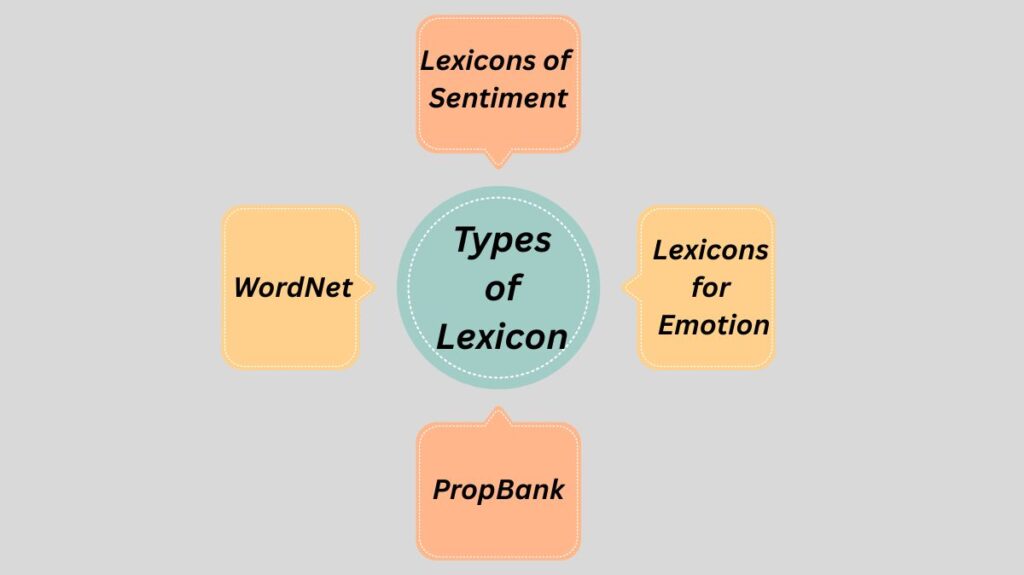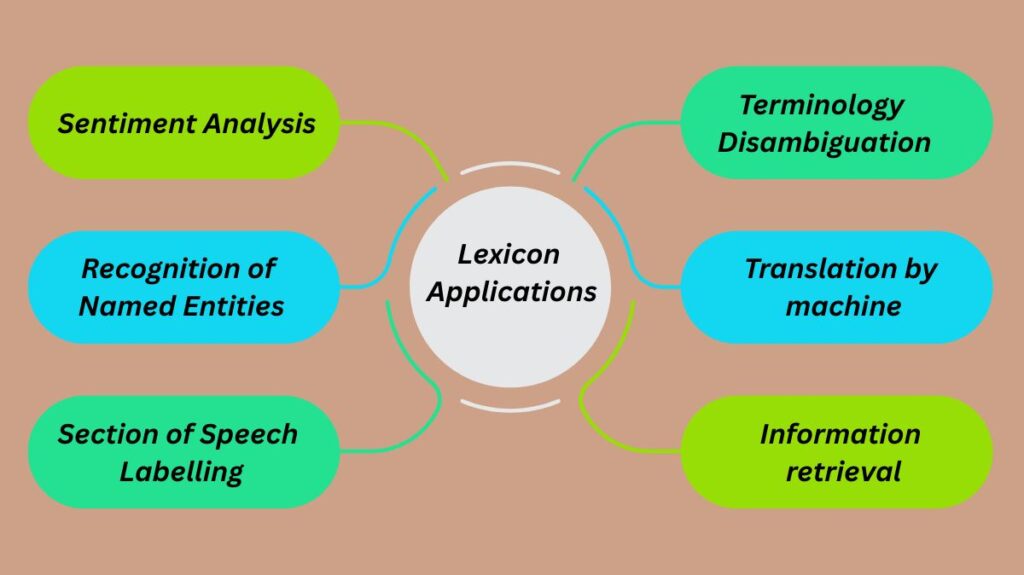Explore how Types of Lexicon impact language understanding, translation, and sentiment detection.
What is Lexicon?
As dictionaries are essential to many NLP applications and advanced in many areas like sentiment analysis, named entity recognition, and machine translation, they are among the fundamental components of natural language processing. They are concerned with making it possible for machines to understand human language and work to process that language in an easy and simple way.
Giving information regarding the meanings, applications, and grammatical characteristics of the words that make up ego languages, however, can be difficult. extremely complex grammar and the most difficult vocabulary, which includes Arabic, Chinese, and other languages. In this post, I will give a fundamental review of dictionaries in NLP, covering their types, creation techniques, applications, and challenges, along with future research contributions on the subject.
In the context of natural language programming, lexicons are groups of words or phrases that are associated with specific features and in a particular style, such as sentiment analysis and part of speech segmentation. They are also used as a source for interpreting human language by offering unique information about meanings and uses, as well as grammatical properties of those words because they contain information about the semantic relationship between words, such as synonyms, antonyms, and hyper-expressions in that part. Each word in these dictionaries can have a degree or label that indicates whether it is neutral, positive, or negative.
Importance of Lexicon
For a variety of reasons, dictionaries are a valuable tool in nervous linguistic programming. First, they offer information on word meanings and grammatical features, which are essential for accurate analysis and interpretation of human existence.
In the programming of the nervous abysses, it is utilised for a variety of well-known and crucial purposes, including enhancing emotions, translating, and identifying fraudulent communications, among others. These aforementioned apps may be in danger in the absence of these dictionaries.
Identify the trends and connections among the overabundance of words. For a project like text categorisation or information retrieval, this information is extremely important.
It cannot overstate the importance of dictionaries because they are regarded as one of the fundamental resources that support many significant developments in the field of natural linguistic programming. This reduces the arithmetic resources needed for specific tasks, which greatly improves the efficiency of applications. Examples of these include pre-hidden trends by the dictionary, the way that can reduce the number of potential interpretations and focus on the most relevant interpretations on the Natural Language Processing.
Types of Lexicon

Lexicons of Sentiment
Both the feelings and the feelings connected to a certain word or phrase are defined in this dictionary. This information is used to work on sentiment analysis, which then determines the general feeling of a portion of the text. For example, that in the section of a product review or a post on the media, the social media that is published and this part that are talking about applies to, and can also see it in the topic of celebrities, and so on Statistical machine translation (SMT). The SentiWordNet dictionary and the AFINN lexicon are two instances of sentiment lexicons.
Lexicons for Emotion
Since they are frequently employed in emotion detection apps, like chatbots or virtual assistants, to determine the emotional state of the user who works on them, speaks to them, or listens to them, these dictionaries are used in the unique and specialised parts related to words. NRC Emotion and EmoLex are two examples of these dictionaries.
WordNet
This lexical database associates English words with conceptual ties by grouping them into synsets, which are collections of synonyms. For every synchronisation, these also contain definitions, usage examples, and more semantic data. For Natural Language Processing-specific tasks like named entity recognition and proposed text classification, WordNet is frequently utilized as a reference.
PropBank
Because it gives information about the sentence’s grammatical structure and the functions of the various words, this lexicon connects verbs with their semantic arguments. PropBank is utilised for a variety of activities, including information extraction and semantic role classification.
Lexicon Applications

Sentiment Analysis
Since the text includes a dictionary of feelings on terms and phrases linked to positive or negative sentiments, dictionaries are employed here to categorise the content according to feelings or emotional tone. Sentiment analysis algorithms can identify the overall mood of the text they are working on by comparing terms in the lexicon with words in the text.
Recognition of Named Entities
Lists of named entities, including individuals, groups, and places, are included in this dictionary. These lexicons are used by named entity recognition algorithms to find and classify named entities in extensively searched and localised material.
Section of Speech Labelling
You can practise giving the words in the phrase marks of speech by using the dictionaries are presently discussing. Lists of words and their corresponding parts of speech (such as nouns, verbs, and adjectives) are found in part-of-speech lexicons. In widely used applications like machine translation and parsing, marking a voice segment is a crucial step that is highly valued.
Terminology Disambiguation
Multisensory words can also be clarified via dictionaries. Lists of words and their definitions can be found in the word meaning dictionary. Because it employs algorithms to eliminate ambiguity in these dictionaries’ definitions, it can ascertain the word’s accurate meaning in a given situation.
Translation by machine
Machine translation systems can map words and sentences from one language to another using dictionaries. A bilingual dictionary includes translations for word or phrase pairings in two different languages.
Information retrieval
Information retrieval systems employ dictionaries to increase the precision of search results. Lists of words and the papers or websites that go with them can be found in an index dictionary. Information retrieval systems can swiftly obtain pertinent documents or web pages by matching search queries to comments in the index dictionary.
Generally speaking, lexicons are crucial to many Natural Language Processing applications because they offer a wealth of linguistic data that can be utilised to increase the precision and effectiveness of text processing and analysis.
How the business uses lexicon?
- IBM Watson: IBM Watson is one of the cognitive computing systems that uses machine learning techniques, including lexicons, and natural language processing technologies to comprehend and analyze the language of regular people. It also includes all languages that are thought to be among the most challenging for the private sector to learn a model.
- Amazon: Sentiment Analysis Lexicons, which assist businesses in examining social media sentiment and customer reviews regarding their goods.
- Google: Google’s natural language processing technologies, such as the Google Cloud Natural Language API, employ the lexicon to analyse text and extract linguistic aspects like sentiment.
- Social media analytics firms: Businesses like Brandwatch, Sprout Social, and Hootsuite use sentiment research and product analysis to form opinions about their product area, among other things.
- Customer service companies: Zendesk and Freshdesk, for example, utilise dictionaries to categorise tickets in the customer service section. This helps them understand the customer satisfaction aspect of the service they received by analysing their thoughts.
